
Both wheat straw (left) and grass hay (right) can have varying amounts of potassium.
The importance of a good, dry cow period cannot be understated when it comes to having cows get off to a good start after calving. Many producers take a proactive approach to transition from the dry cow period into lactation by lowering the dietary cation-anion difference (DCAD) of the close-up ration. This is done to reduce risk of hypocalcemia and milk fever around calving.
Michigan State University Extension recommends feeding low or negative DCAD (meq per 100 grams of dry matter of K + Na – Cl – S) the last three weeks before calving through the use of low potassium (K) forages as one part of the DCAD management strategy. Two choices for low K forages that can be included in the close-up ration are either straw or low K grass hay. However, the first question producers need to ask themselves is, “Do I really need to use low K forages in my close-up ration?” Once this is answered, two economic questions arise, “Can I afford to grow low-K forages on my farm, or should I purchase these forages?”
Let’s consider the importance of the question, “Do I really need to use low-K forages in my close-up ration?” A USDA National Animal Health Monitoring System survey of U.S. dairy farms estimated that about 25 percent of first lactation and greater than 50 percent of third and greater lactation cows were subclinically hypocalcemic. Based on this survey, many farms may be having problems and if this is so, reducing the DCAD with low K forages plus anion supplementation can be a benefit on your farm.
The ensuing economic losses from higher veterinary costs and milk yield losses associated with metabolic disorders and lower dry matter intakes are a very real concern. Although there is not always a positive or negative milk response, research studies have reported milk yield increases of 6.8-18 percent where cows received supplemental anions to reduce the DCAD compared to cows fed a control diet. Given the current Michigan milk price, there’s plenty of economic incentive to have cows get off to a good start. To produce anionic diets, producers should use low K grass hay that is less than 2.5 percent K to lower the total dietary K. However, the lower the percent K, the better.
Purchasing or growing forages for a specific segment of the dairy is not an easy question to answer. The option of growing low K grass hay is a double-edged sword; the needs of the dry cow for K is less than what it takes to maintain a vigorous and persistent stand of grass. This may mean that you need to manage your grass stands specifically for dry cow feed to get the maximum benefit of homegrown, low K grass hay. Cool season grasses are luxury consumers of K, which means they will take up more than they need if it is readily available. Therefore, manure applications should be avoided and the use of K fertilizer should be limited since both will increase soil and plant levels of K.
Research from Cornell University showed that if soil K is high, N fertilization will increase forage K concentration. Once excess available soil K is removed, however, the opposite trend occurs. If soil K is low, N fertilization will decrease forage K concentration. One or two seasons of high N fertilization will remove excess soil K.
Spring forage generally has a higher concentration of K than regrowth. Also, the concentration of K in grass forage declines as the plant matures. Two approaches can be used when cutting grass hay. First, if producers wait for the grasses to mature, this normally means you will only have one cutting of low K grass hay during the growing season. Second, you could harvest first cutting early and use the regrowth for dry cows as it will be lower in K, but this strategy would sacrifice total yield for lower K.
Timothy grass normally has less K than other cool season grasses such as orchardgrass. However, it should be noted that if you have very high soil test levels of K in your fields, the crop will take up higher amounts as well and can exceed 3.5 percent K. This is also true for corn silage, wheat straw and other cool season grasses. Therefore, it’s a must to have a feed test done for all close-up ration forages to find out whether the forage falls into a range that is sufficiently low enough in K to properly balance rations.
Another consideration for buying or growing low K grass hay is the cost of land rent. Many areas of Michigan may have higher land rents that make the price unattractive. Using the example below in Figure 1 from the MSU Farm Financial Management website and the Forage Crop Enterprise Template, a producer would need to be able to produce 2 tons of dry matter forage on land with a rental price of $100 per acre or less in order to compete with the price of straw delivered to the farm for $135 per ton. Using the template provided on the website, producers can use their own farm input prices to calculate the maximum price their land rent prices need to be in order to compete with straw.
Figure 1. Forage Crop Enterprise Template for grass hay from MSU Extension
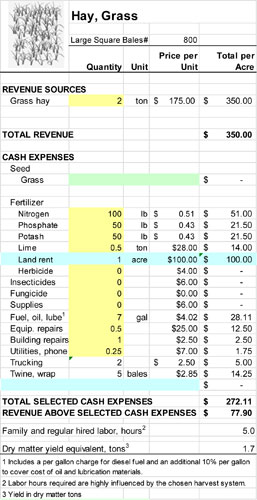
If producers are able to produce more than 2 tons of dry matter per acre, they could possibly sell the grass hay as an opportunity crop to other animal producers where K levels in the hay are not as important. Current prices for high quality grass hay are ranging from $140 to $300 per ton.
Depending on the wheat harvested, an additional crop of wheat straw harvested from the field can yield 0.75-1.25 tons per acre. The loss of organic matter may be a significant factor when determining if you are selling your straw crop in the future. Current prices for wheat straw in the Thumb region of Michigan range from $125 to $160 per ton. Other factors such as freight, time of purchase, or whether the straw is in large or small square bales will also affect the price. As wheat acreages fluctuate from year-to-year, availability becomes more important, so if you are a consistent user of wheat straw in your dry cow rations, make sure your local supply will be adequate.
Whatever your circumstances as a dairy producer, the question about using a low K grass hay or straw in your close-up rations may only be the first of many questions related to the complex topic area of whether to buy or grow your dry cow forages.





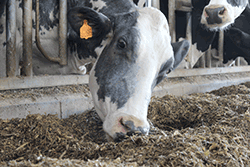
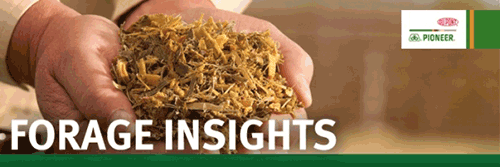 About this time of year, many dairy and beef producers take a look at their feed stockpiles and wonder how long they will last.
About this time of year, many dairy and beef producers take a look at their feed stockpiles and wonder how long they will last.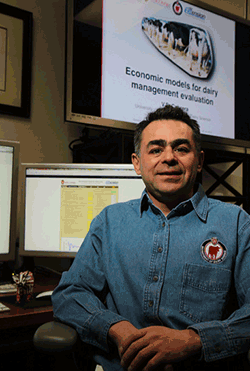 Victor Cabrera isn’t an expert in cattle genomics or reproduction. He hasn’t spent a day in a lab running tests on the nutritional content of feed. In fact, Cabrera, associate professor in the University of Wisconsin-Madison dairy science department, spends most of his time in front of a screen building economic modeling programs.
Victor Cabrera isn’t an expert in cattle genomics or reproduction. He hasn’t spent a day in a lab running tests on the nutritional content of feed. In fact, Cabrera, associate professor in the University of Wisconsin-Madison dairy science department, spends most of his time in front of a screen building economic modeling programs. Alltech is launching a new support tool for nutritionists to evaluate and troubleshoot dairy rations to maximize feed efficiency and combat ever-rising feed costs, and estimate the amount of energy lost as methane and methane emissions per animal. The In Vitro Fermentation Model (IFM) is a diagnostic tool that simulates rumen fermentation and evaluates the nutritive value of total mixed rations (TMR) in terms of digestibility and end-products formation.
Alltech is launching a new support tool for nutritionists to evaluate and troubleshoot dairy rations to maximize feed efficiency and combat ever-rising feed costs, and estimate the amount of energy lost as methane and methane emissions per animal. The In Vitro Fermentation Model (IFM) is a diagnostic tool that simulates rumen fermentation and evaluates the nutritive value of total mixed rations (TMR) in terms of digestibility and end-products formation.
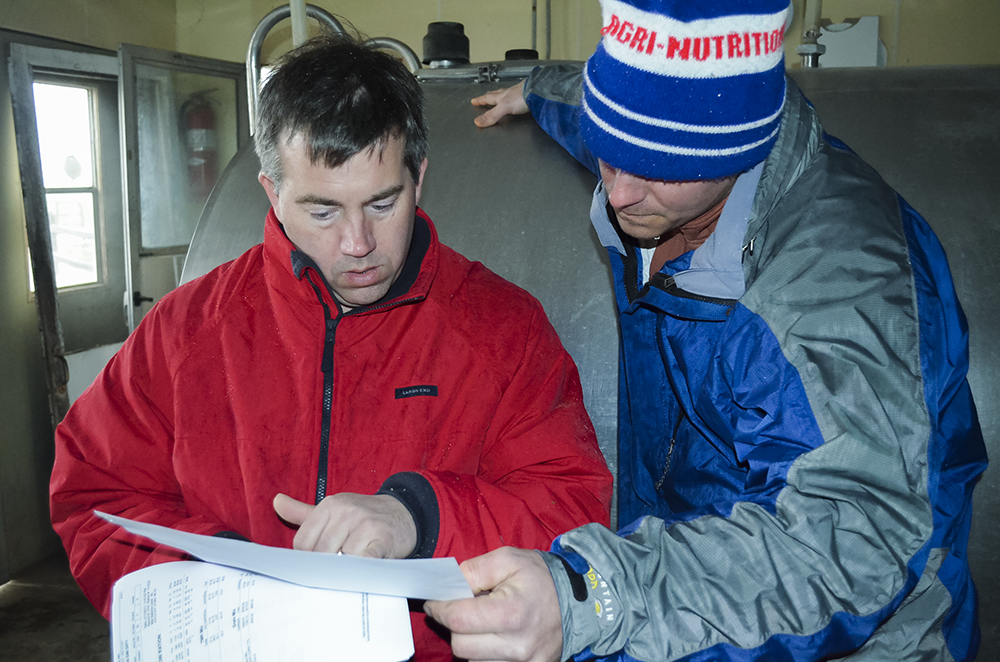
 An effective nutrition consultant will investigate and analyze all the issues impacting your cows and thus impacting your success. The Bullvine went to Dr. Scott Bascom to get some insight on the value of working with a nutrition consultant. Dr. Bascom is the Director of Technical Services at
An effective nutrition consultant will investigate and analyze all the issues impacting your cows and thus impacting your success. The Bullvine went to Dr. Scott Bascom to get some insight on the value of working with a nutrition consultant. Dr. Bascom is the Director of Technical Services at  From the Bunker to the Bank!
From the Bunker to the Bank! Beyond the Basics to Practical and Personal
Beyond the Basics to Practical and Personal




